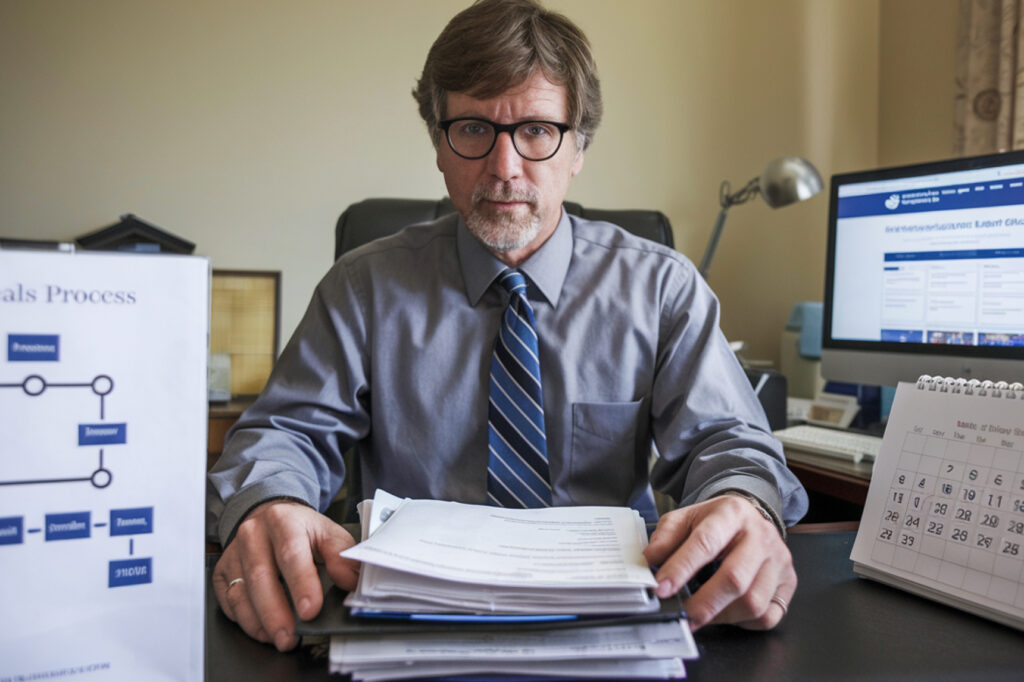A. Reconsideration: Your First Step After Denial Got denied?
Don’t panic – it happens to about 65% of initial applications. Reconsideration is your first move in fighting back, and you need to act fast. You’ve only got 60 days from the date on your denial letter to file. During reconsideration, a completely different examiner reviews your case. This person had nothing to do with your initial denial, which gives you a fresh shot. They’ll look at all your original evidence plus anything new you submit. Here’s the brutal truth though – only about 15% of reconsiderations get approved.
Why so low? Because unless you bring substantial new medical evidence to the table, you’re fighting an uphill battle. The smartest move? Use this time to: Gather more detailed medical records Get specialized testing done Ask your doctors for supporting statements Keep a daily symptom and limitation journal Most people get through reconsideration in 3-5 months. It’s not quick, but it’s necessary groundwork for the next level if you’re denied again.

B. Administrative Law Judge (ALJ) Hearing: Making Your Case in Person
This is where things get real – and where your chances dramatically improve. About 50% of people who make it to an ALJ hearing win their case.
The ALJ hearing is nothing like what you see on TV. It’s informal, usually held in a conference room, and typically lasts under an hour. But don’t let the casual setting fool you – this is your make-or-break moment. You’ll finally get face time with someone who can approve your claim. The judge will ask questions about your condition, your work history, and how your disability affects your daily life. They might bring in vocational experts or medical experts to weigh in. Preparation is everything.
Before your hearing: Review your entire file Practice explaining how your condition limits you Be ready to describe a typical day living with your disability Understand what jobs the SSA thinks you might still be able to do Wait times for hearings can be brutal – anywhere from 8-24 months depending on your location.
This is where having an attorney really pays off. They’ll know what evidence matters most to judges and how to present your case effectively.
C. Appeals Council Review: When the ALJ Decision Doesn’t Go Your Way
Struck out with the ALJ? The Appeals Council is your next stop. But let’s be clear – this isn’t a do-over of your hearing. The Council reviews cases for legal errors, not to second-guess the judge’s decision.
When you request an Appeals Council review, three things can happen:
1. They might deny your request if they think the ALJ decision was correct
2. They could send your case back to the ALJ for another hearing
3. In rare cases, they might reverse the decision and approve your benefits
The odds aren’t great here – less than 3% of cases get approved at this level. Most cases (about 75%) just get denied review entirely. The Appeals Council is drowning in requests, so expect to wait 18-24 months for a decision. During this time, keep seeing your doctors and gathering evidence. If your condition worsens, document everything.
D. Federal Court Review: Taking Your Case to the Highest Level
Filing a civil action in federal district court is your last resort. This is serious legal territory – you’re literally suing the Social Security Administration. At this stage, you absolutely need an attorney with experience in federal court. The judge won’t consider new evidence but will review your case for legal errors. They’re looking at whether the SSA followed proper procedures and if the decision was supported by “substantial evidence.” Federal court isn’t quick or easy: Filing fees start around $400 (though you can request a fee waiver) The process typically takes 12-18 months You’ll need to file legal briefs arguing your case Only about 2-3% of disability cases ever reach this level The upside? Federal judges overturn or remand about 45% of the cases they see. If you’ve made it this far and have strong legal arguments, you’ve got a fighting chance.
